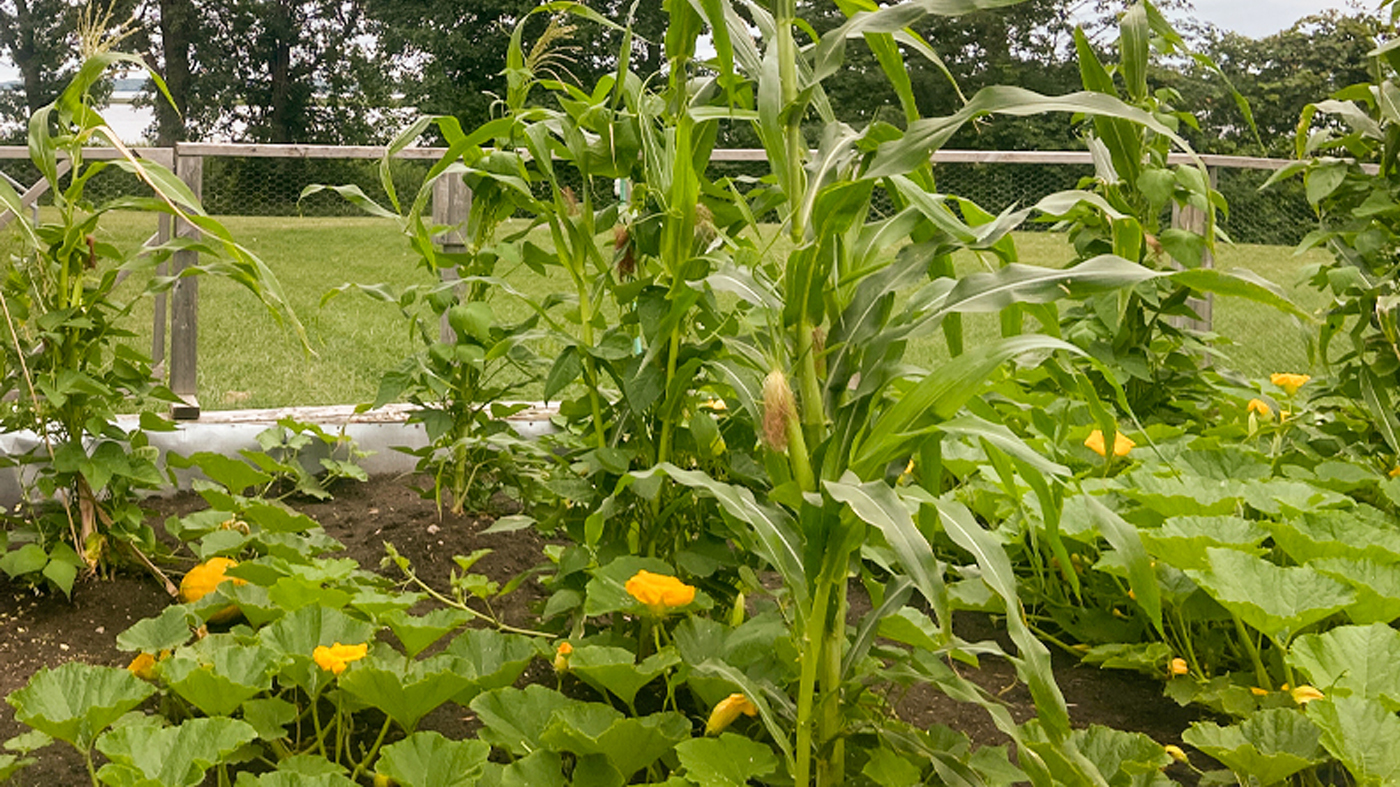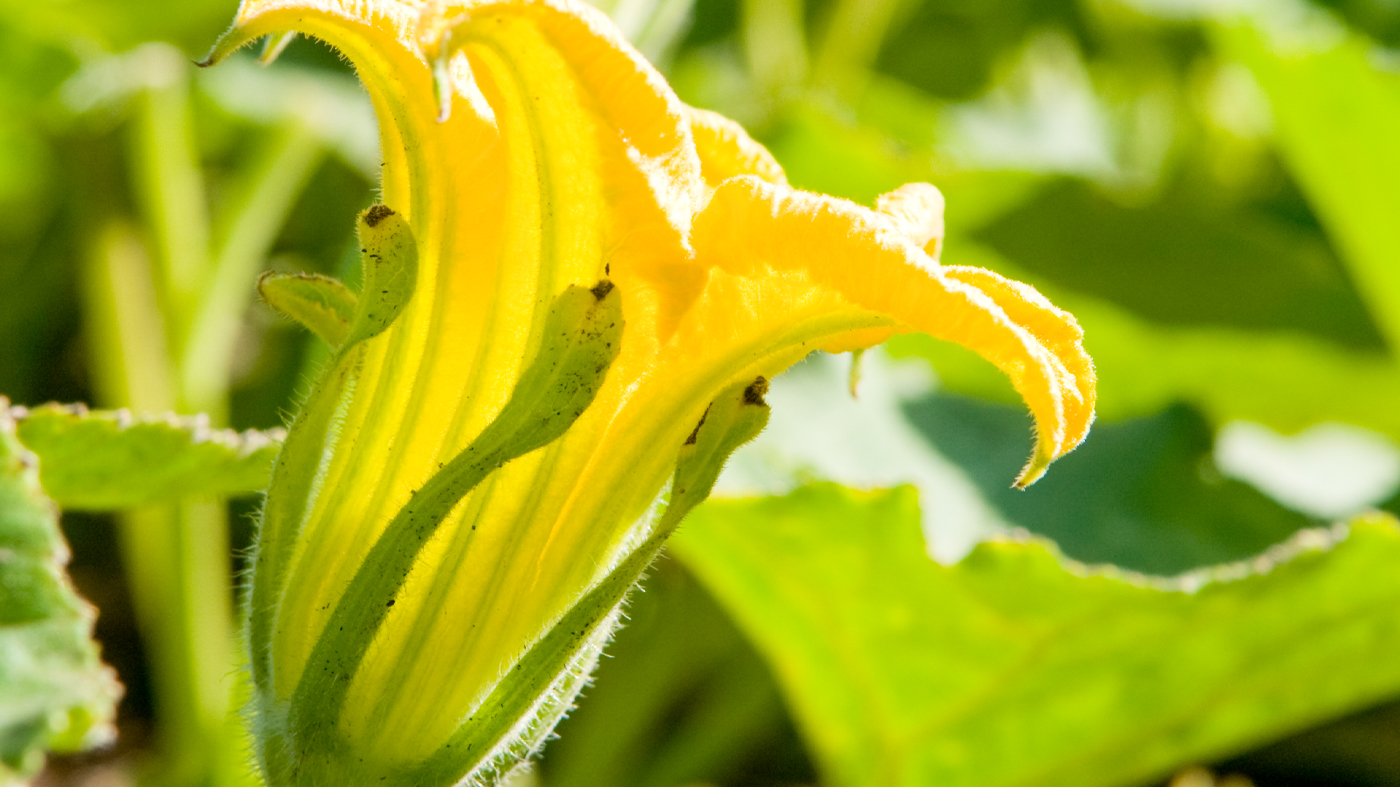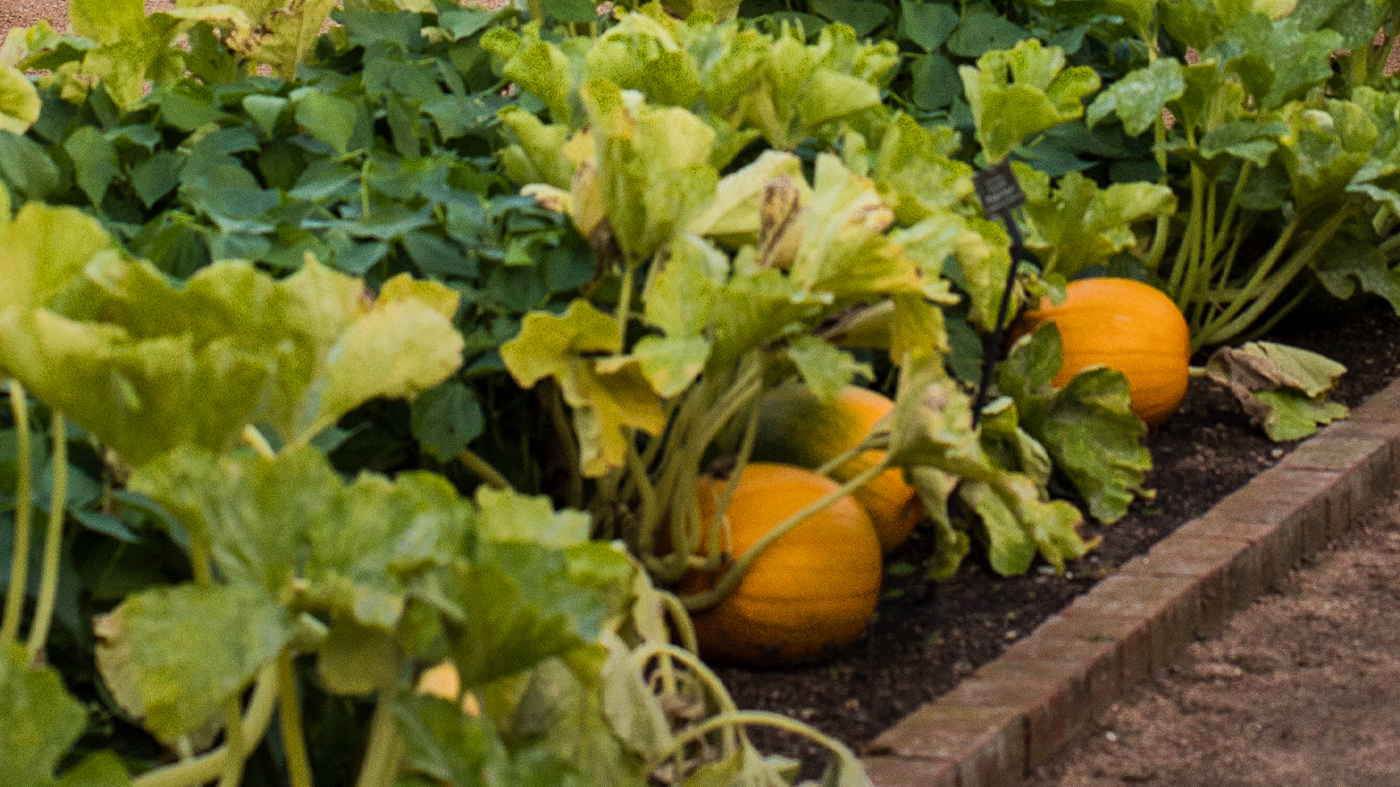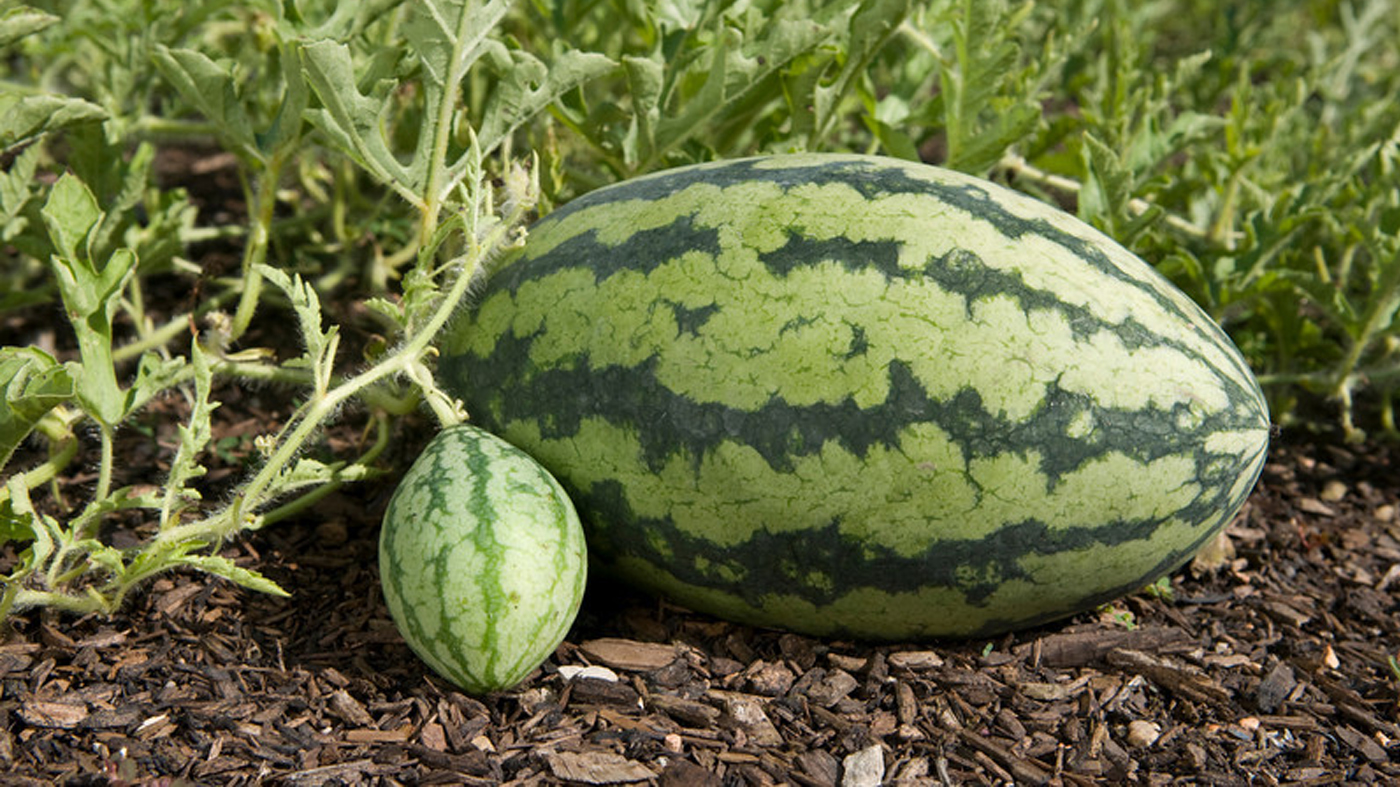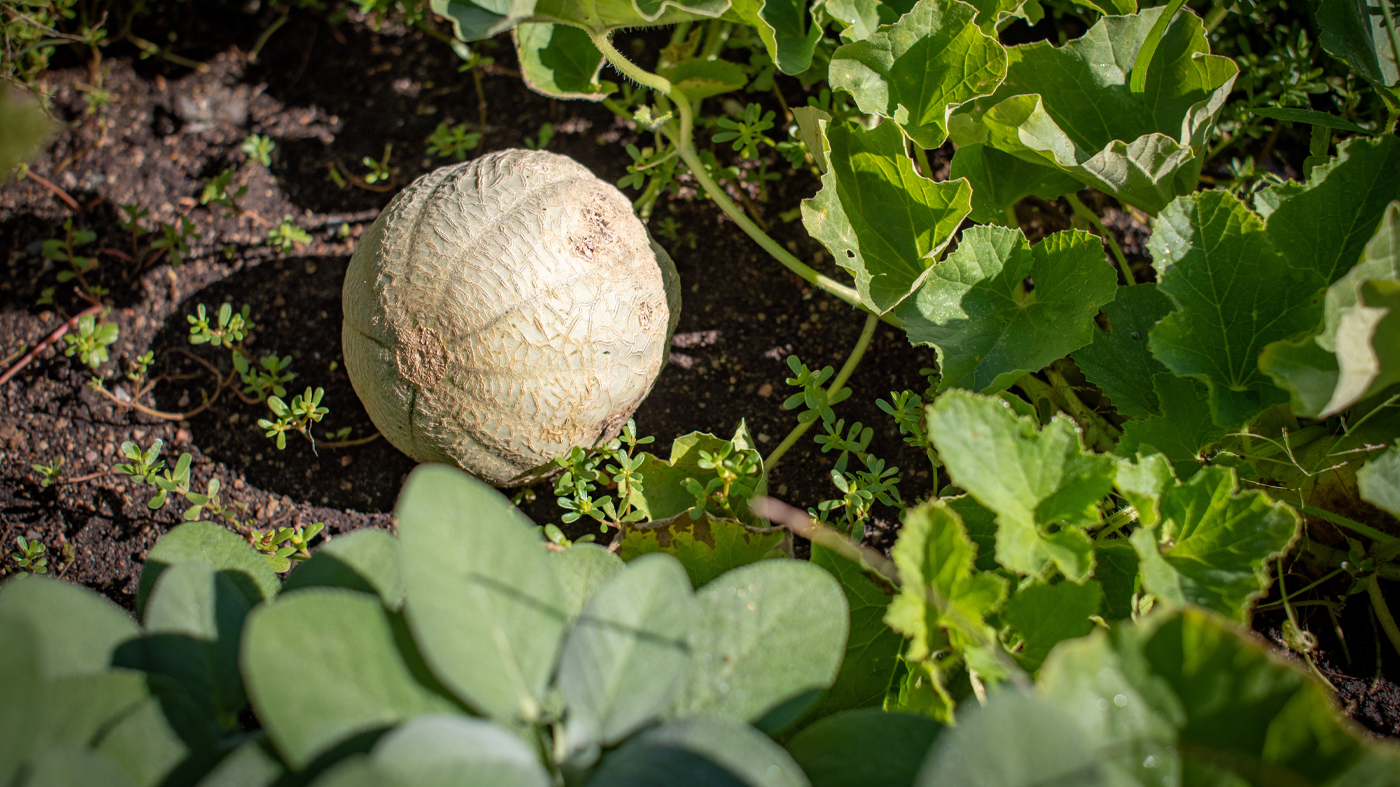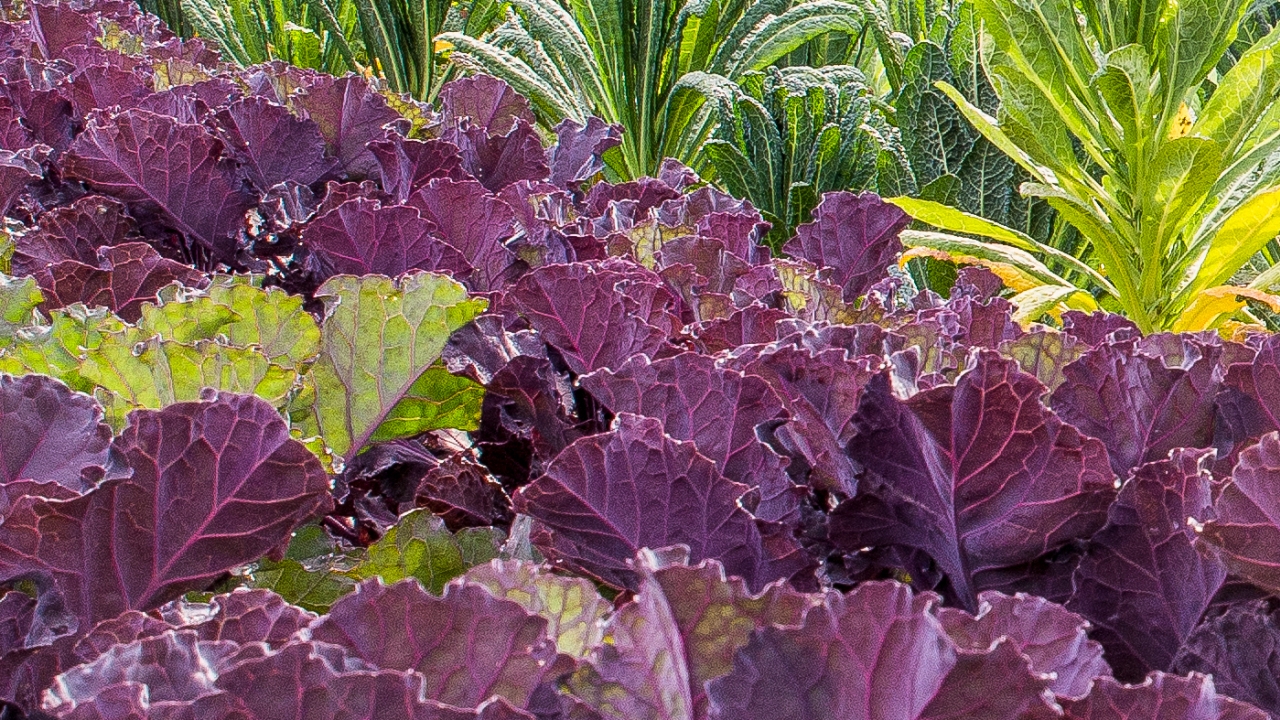

Vegetables, Late-season
An autumn visit to the fruit and vegetable garden in search of late-season surprises can be rewarding. For it's at this time that all those plants requiring "a long growing season" (90 to 100+ days from germination of the seed to harvest of the crop) are coming into their own. The vines are laden with produce that is not only beautiful but also positively delicious. The Chicago Botanic Garden's Fruit and Vegetable Garden is ripe with treasures at this time of year.
The historic bed known as "The Three Sisters" had its origin with the early Native Americans. The sisters are squash, corn and pole beans–staples of a settler's diet. The corn is planted first since it requires the longest growing time. Pole beans are planted around the corn to take advantage of the corn plant's tall stalk as a support. Low-growing, blue-gray squash, 'Blue Hubbard', surrounds the other two vegetables on the outermost circle. The spines growing on the undersides of the squash leaves serve as a deterrent to animals seeking to harvest the produce for themselves.
Squash Blossoms and More Squash
'Blue Hubbard' is just one of three different squashes ripening at this time. Bright orange, edible squash blossoms are a clue to a sweet, 4- to 5-pound butternut squash known as 'Nicklow's Delight'. Growers of this tasty squash can count on harvesting five fruit per plant. A summer squash plant that keeps on producing, even as you harvest, is an ivory and dark green variety known as 'Sweet Dumpling'. Recommended for smaller gardens, the plant has 4-foot vines that can be cut back after a few flowers and fruit have appeared, thereby restricting its growth to a 3-foot growing area.
Veggies for Small Spaces
Other choices for urban gardens and small spaces, including containers, is the tender 'Bride', a slim, 8-inch, rose and white Asian eggplant that keeps producing right up to frost. A favorite with children is the little pumpkin 'Wee-B-Little'. This All-America Selections winner is an apple-sized pumpkin perfect for fall crafts.
Watermelons
Vegetables are not the only autumn edibles ripening on vines. An All-America Selections watermelon winner, 'Golden Crown' has the recognizable pink flesh and black seeds, but its rind matures to a burnished gold after only 60 days of growth. It is called an icebox melon since you can put it into the refrigerator without having to take everything else out first.
The AAS winner for 1999 was 'New Queen', a 5-pound gourmet watermelon with golden flesh and a green mottled rind. 'New Queen' plants will keep on producing all through the season. But the watermelon that is bound to win all hearts comes from an heirloom plant dating back to the 1700s. Its curious name of 'Moon and Stars' becomes clear after closely examining the yellow patterns scattered on the green leaves. The larger foliar flecks resemble moons, and the smaller ones are surely stars. These charming yellow marks are repeated on the green rind of the developing watermelons.
Casaba Melon
Melons can be difficult for some growers in the Chicago area since they demand warm soil and long baking days in full sun. 'Sungold' is a 5- to 7-pound casaba melon well-suited to Northern gardens' shorter growing season. 'Sungold' matures in 85 days with gray-white rind that splits open to reveal juicy golden flesh.
Muskmelon or Cantaloupe
An heirloom muskmelon from England, 'Blenheim Orange' grows well in American gardens. It's a short-season two-pounder with dark green rind and bright orange flesh. A close cousin, the American cantaloupe 'Earlisweet', produces sweet salmon flesh but weighs five pounds. Melon plants trained for smaller spaces or encouraged to climb a trellis must have their fruit netted for support, thus creating the classic net pattern on the rind.
And how to tell when the melon is ripe? Fruit and vegetable gardeners will tell you to keep an alert eye to changes in the color of the rind and anticipate the moment when the stem slips from the melon–these indicate harvest time is now. Veterans might also tell you to wait for the moment when the fragrance of the melon is sweet and strong enough to call out to you. But hurry, because its intense fragrance is also speaking to many furry and feathered creatures. For the home grower who left the melon too long on the vine or lost it to the critters, here's a positive spin: worms love melons. If one is left on too long or gets too soft or cracks, let them have it. The castings or waste the worms will produce are fine fertilizer for your vegetable patch.


